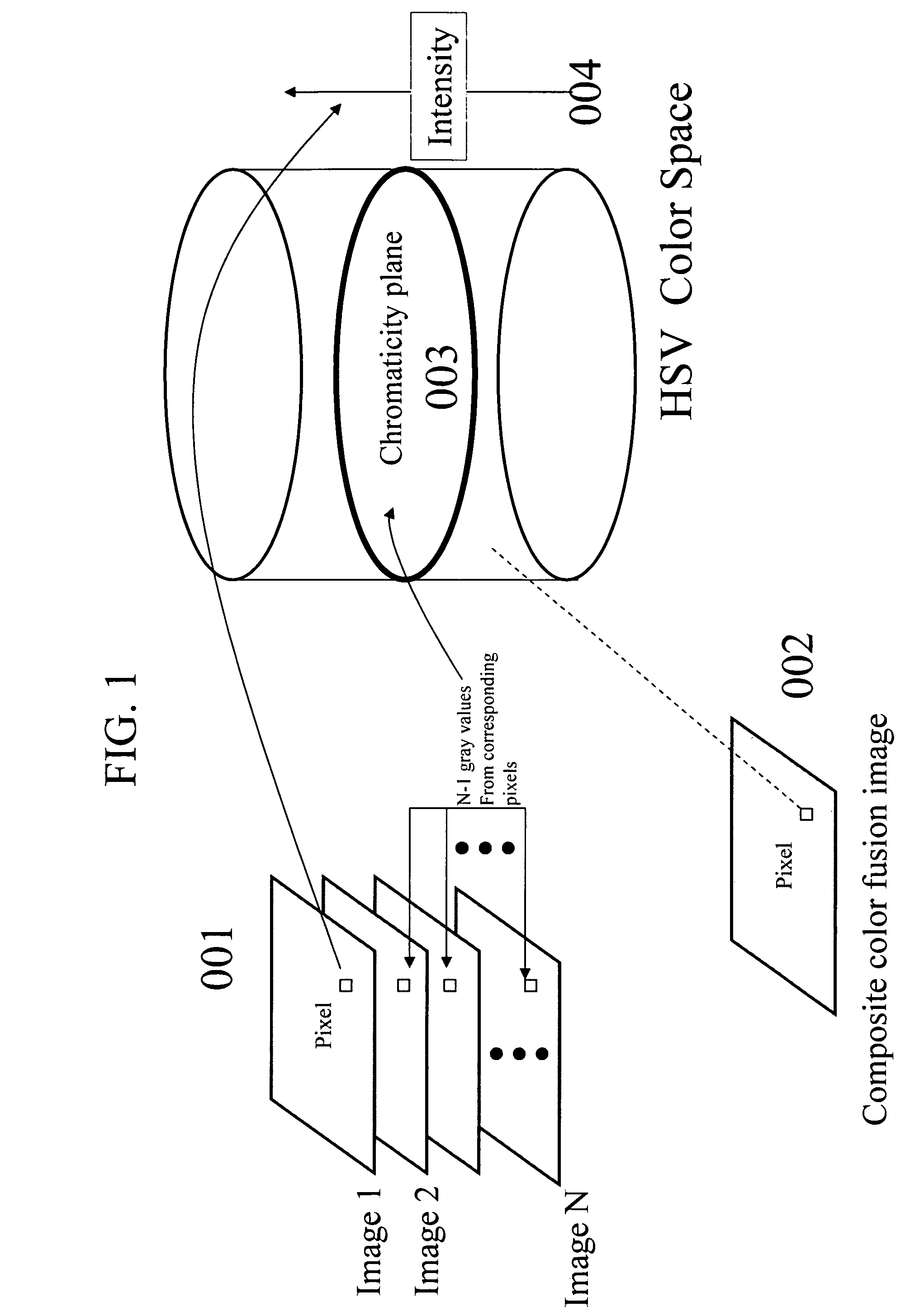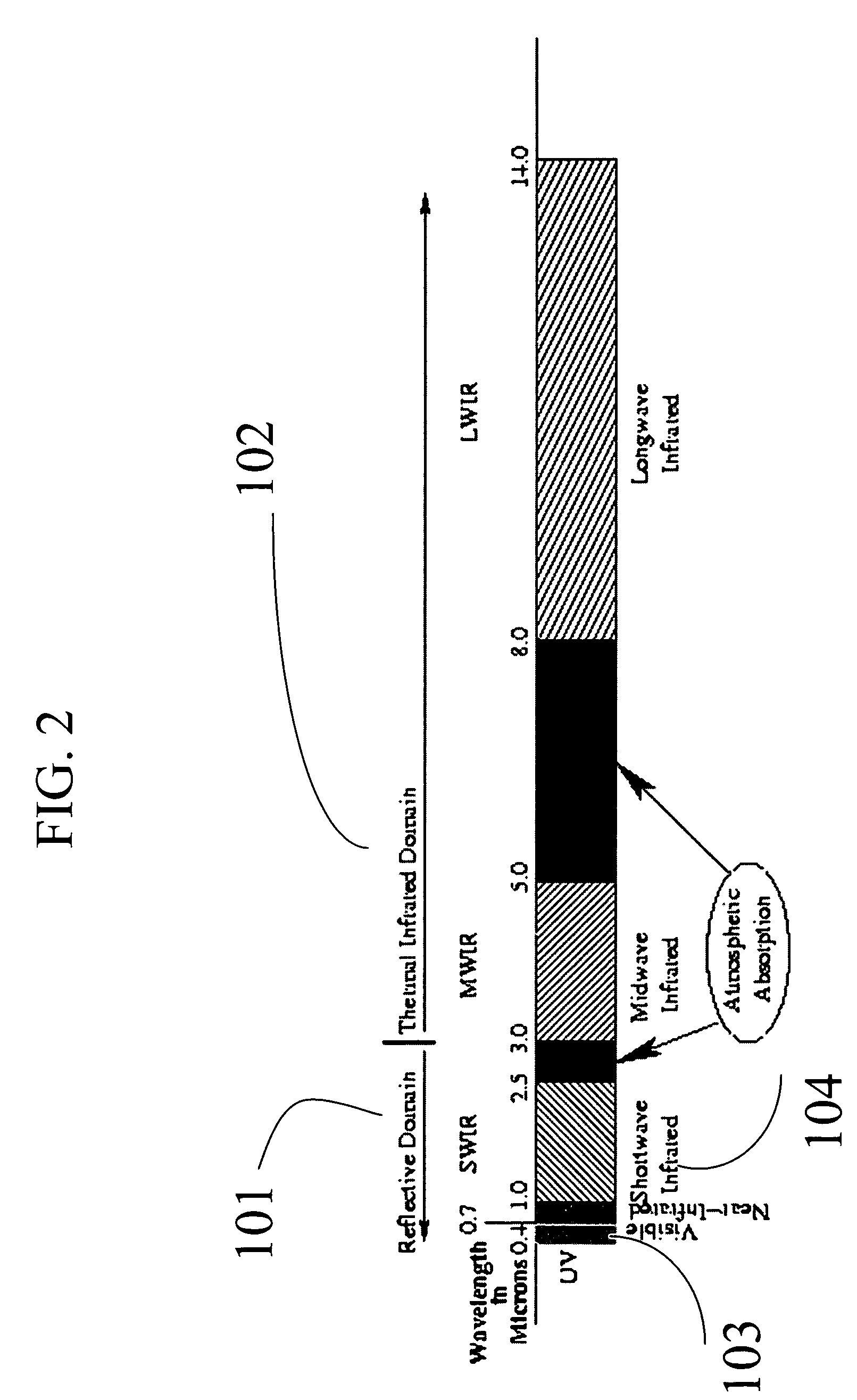Color invariant image fusion of visible and thermal infrared video
a technology of invariant image and video, applied in image enhancement, texturing/coloring, image analysis, etc., can solve the problems of confusion between visible and thermal infrared contrast, inability to adapt to many applications, lack of invariance to visible illumination changes, etc., and achieve intuitive and informative image fusion algorithms for single still frames. not necessarily appropriate, the effect of enhancing the visualization schem
- Summary
- Abstract
- Description
- Claims
- Application Information
AI Technical Summary
Benefits of technology
Problems solved by technology
Method used
Image
Examples
Embodiment Construction
[0025]FIG. 1 shows the methodology of forming a color composite image 002 from N gray level images 001 by decomposing the color space representation into its chromaticity planes 003 and intensity 004 (in this case HSV space further described in FIG. 5) and making the mapping into chromaticity plane coordinates only dependent on the corresponding gray values of the latter N−1 images and independent of the gray values of the first image. It is important to note that the HSV color space 405 illustrated in FIG. 5 is only one such color space that can be naturally decomposed into segregated 2-D color planes 404 orthogonal to the 1-D intensity axis 403. For instance, the well-known CIE color space 410 and other variants that are psychophysically accurate, and RGB tri-stimulus color spaces 420 can be used just as well [Wyszecki, Stiles, “Color Science: Concepts and methods, Quantitative Data and Formulae”, 1982, John Wiley & Sons]. This certainly does not exhaust the list of possible color...
PUM
 Login to View More
Login to View More Abstract
Description
Claims
Application Information
 Login to View More
Login to View More - R&D
- Intellectual Property
- Life Sciences
- Materials
- Tech Scout
- Unparalleled Data Quality
- Higher Quality Content
- 60% Fewer Hallucinations
Browse by: Latest US Patents, China's latest patents, Technical Efficacy Thesaurus, Application Domain, Technology Topic, Popular Technical Reports.
© 2025 PatSnap. All rights reserved.Legal|Privacy policy|Modern Slavery Act Transparency Statement|Sitemap|About US| Contact US: help@patsnap.com



